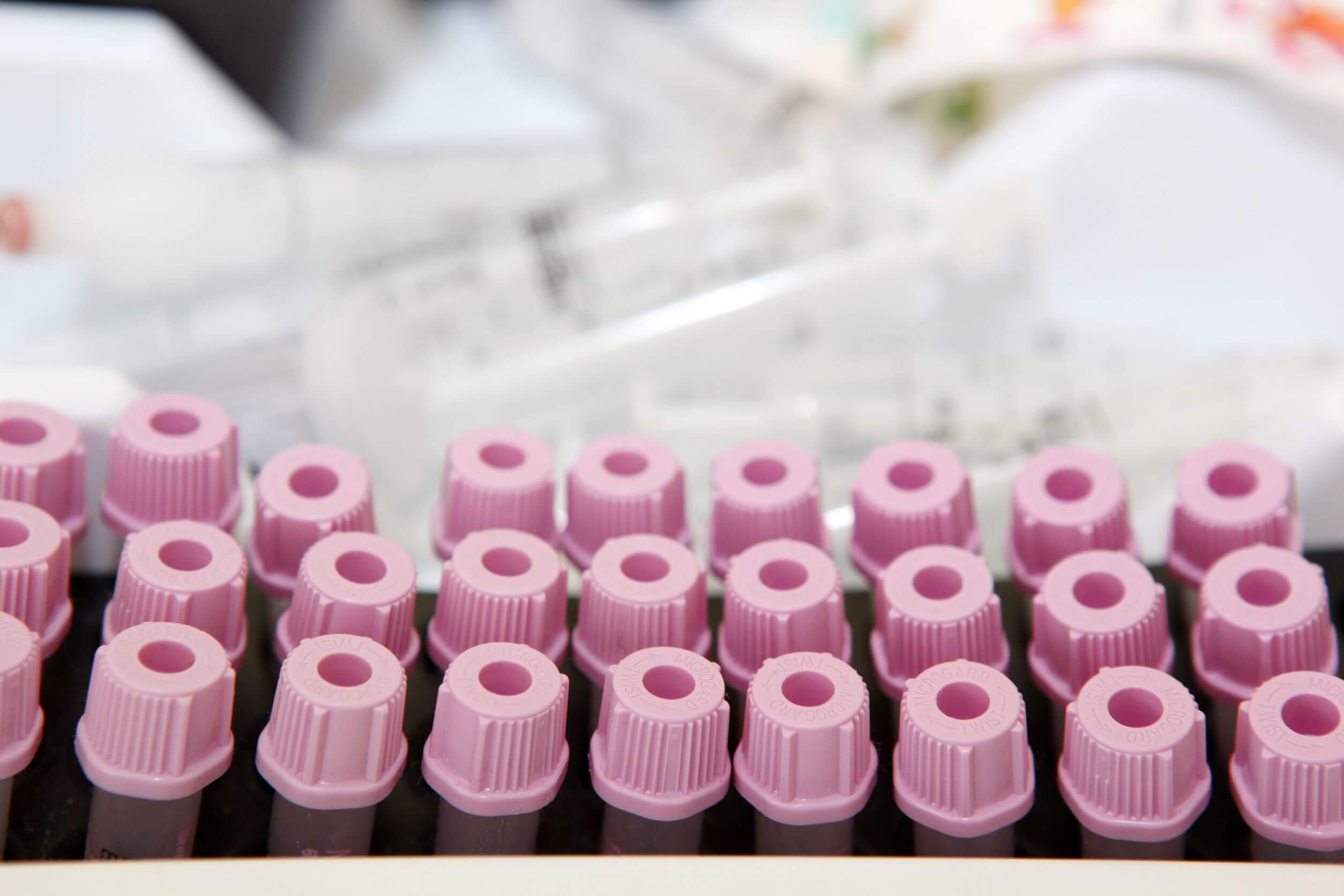Hyperprolactinemia: Symptoms, Causes and Treatment

All the functions of the human body are regulated by a series of substances called hormones. They allow the body to adapt to different physiological and pathological situations. However, the increase in its secretion can generate conditions such as hyperprolactinemia. Learn more about it below!
In this case, the hormone involved is prolactin, with a protein structure and synthesized in a part of the brain called the pituitary. This substance plays a fundamental role in the process of breastfeeding, where it’s responsible for stimulating the mammary gland.
Hyperprolactinemia is defined as the ‘presence of elevated prolactin levels in the blood’, which can occur from multiple causes. This is the most common endocrine disorder of the hypothalamic-pituitary axis. The pathology in question is very frequent and it’s estimated that it affects up to 10% of the population without presenting a specific symptomatology.
Symptoms of hyperprolactinemia

This endocrine condition can affect both women and men, being more common in women during their childbearing years, that is, between 20 and 50 years of age. Generally speaking, people with hyperprolactinemia tend to have infertility, decreased or loss of sexual desire, and loss of bone mass.
On the other hand, prolactin fulfills different specific functions in both women and men, so the symptoms suffered by both can vary. In this sense, women with hyperprolactinemia may have the following symptoms:
- Milk secretion through the nipple or galactorrhea
- Weight gain
- Vaginal dryness
- Visual disturbances, especially when it is due to a brain tumor
- Slight increase in body hair
Prolactin physiologically inhibits luteinizing and follicle-stimulating hormones, thus preventing ovulation. In this way, women with hyperprolactinemia will also present alterations in, or the absence of, the menstrual cycle. In fact, studies establish that the increase in the hormone is present in 30% of women with secondary amenorrhea.
In men, the symptoms associated with high levels of prolactin in the blood are less evident, since most of the symptoms are associated with the presence of brain tumors. In this sense, men with hyperprolactinemia present the following symptoms:
- Erectile dysfunction
- Decrease in semen production
- Enlargement of the mammary glands or gynecomastia
- Visual disturbances and headaches
- Galactorrhea only when elevation is extreme
What are your causes?
Hyperprolactinemia can be associated with physiological and pathological causes, the latter being the most important. Among the physiological causes that can lead to a transitory and self-regulated increase in prolactin levels, pregnancy, the puerperium, exercise, intercourse, sleep, and stress stand out.
The pathological causes of the condition are the most important, as they generate an uncontrolled increase in prolactin. The increase in the hormone without any type of control is the cause of the appearance of the characteristic symptoms.
Prolactin-secreting tumors or prolactinomas represent 40% of all pituitary tumors according to research, which places them as the main tumor cause of hyperprolactinemia. On the other hand, other encephalic conditions can also cause the disease such as Rathke cysts, granulomatosis, and surgical processes.
Hyperprolactinemia can also be triggered by the consumption of various drugs that intervene in the factors that regulate prolactin release. Among the main drugs that generate this pathology as part of its side effects, the following stand out:
- Anesthetics
- Anticonvulsants
- Neuroleptics
- Some antihypertensive drugs
- Antidepressants
- Some antihistamines
Diagnosis

The diagnosis of hyperprolactinemia is made through a blood test, where prolactin levels will be measured. In addition, a test called a thyroid profile may be requested in case of detecting abnormal prolactin levels, which is necessary to rule out the presence of hypothyroidism.
Medical history and physical examinations are helpful in determining the cause and verifying the presence of symptoms. In this sense, the doctor can inquire about the consumption of the drugs mentioned above and about suffering from a chronic disease or recent surgical processes.
If hyperprolactinemia is suspected to be due to a prolactinoma, your doctor may order a CT scan or some other imaging study. The purpose of these studies is to determine the extent of the tumor and establish a treatment to be followed.
Treatment of hyperprolactinemia
The treatment of this pathology is aimed at reducing prolactin levels in the blood until they reach normal values. The methodology to be followed to achieve the desired results will depend on the specific cause of the hyperprolactinemia.
When the pathology is due to the consumption of medications, the ideal thing is to suspend the treatment and consult the doctor, and search of an alternative drug that does not create the collateral effect. Prolactin levels usually return to normal levels within a few days of stopping the use of the drug.
Treatment of prolactinomas or some other brain tumor is a bit more aggressive. In this sense, it may be necessary to consume drugs such as cabergoline and bromocriptine, which will eliminate the symptoms presented and can help reduce the size of certain tumors.
The drugs mentioned above can have serious side effects and lead to tolerance when used improperly. Therefore, it’s necessary to maintain a constant check of hormonal levels during treatment, and to suspend it when normal levels are reached.
Some prolactinomas can be resistant to the aforementioned drugs, so the symptoms won’t disappear. In these cases, transsphenoidal surgery is necessary to remove the tumor. When surgery is impossible, radiation therapy should be applied to shrink the tumor.
A frequent pathology with multiple causes
Hyperprolactinemia is a frequent finding in endocrinology consultations, and can affect millions of people around the world. The symptoms are usually evident in most cases, although some people may have this condition subclinically and not show any symptoms.
The cause of the disease is highly variable, ranging from a brain tumor to the use of some psychotropic drugs. One of the characteristic symptoms in women is galactorrhea, which is why it’s recommended to seek medical assistance.
Prompt diagnosis and treatment are essential, as it can cause infertility in both sexes.
All the functions of the human body are regulated by a series of substances called hormones. They allow the body to adapt to different physiological and pathological situations. However, the increase in its secretion can generate conditions such as hyperprolactinemia. Learn more about it below!
In this case, the hormone involved is prolactin, with a protein structure and synthesized in a part of the brain called the pituitary. This substance plays a fundamental role in the process of breastfeeding, where it’s responsible for stimulating the mammary gland.
Hyperprolactinemia is defined as the ‘presence of elevated prolactin levels in the blood’, which can occur from multiple causes. This is the most common endocrine disorder of the hypothalamic-pituitary axis. The pathology in question is very frequent and it’s estimated that it affects up to 10% of the population without presenting a specific symptomatology.
Symptoms of hyperprolactinemia

This endocrine condition can affect both women and men, being more common in women during their childbearing years, that is, between 20 and 50 years of age. Generally speaking, people with hyperprolactinemia tend to have infertility, decreased or loss of sexual desire, and loss of bone mass.
On the other hand, prolactin fulfills different specific functions in both women and men, so the symptoms suffered by both can vary. In this sense, women with hyperprolactinemia may have the following symptoms:
- Milk secretion through the nipple or galactorrhea
- Weight gain
- Vaginal dryness
- Visual disturbances, especially when it is due to a brain tumor
- Slight increase in body hair
Prolactin physiologically inhibits luteinizing and follicle-stimulating hormones, thus preventing ovulation. In this way, women with hyperprolactinemia will also present alterations in, or the absence of, the menstrual cycle. In fact, studies establish that the increase in the hormone is present in 30% of women with secondary amenorrhea.
In men, the symptoms associated with high levels of prolactin in the blood are less evident, since most of the symptoms are associated with the presence of brain tumors. In this sense, men with hyperprolactinemia present the following symptoms:
- Erectile dysfunction
- Decrease in semen production
- Enlargement of the mammary glands or gynecomastia
- Visual disturbances and headaches
- Galactorrhea only when elevation is extreme
What are your causes?
Hyperprolactinemia can be associated with physiological and pathological causes, the latter being the most important. Among the physiological causes that can lead to a transitory and self-regulated increase in prolactin levels, pregnancy, the puerperium, exercise, intercourse, sleep, and stress stand out.
The pathological causes of the condition are the most important, as they generate an uncontrolled increase in prolactin. The increase in the hormone without any type of control is the cause of the appearance of the characteristic symptoms.
Prolactin-secreting tumors or prolactinomas represent 40% of all pituitary tumors according to research, which places them as the main tumor cause of hyperprolactinemia. On the other hand, other encephalic conditions can also cause the disease such as Rathke cysts, granulomatosis, and surgical processes.
Hyperprolactinemia can also be triggered by the consumption of various drugs that intervene in the factors that regulate prolactin release. Among the main drugs that generate this pathology as part of its side effects, the following stand out:
- Anesthetics
- Anticonvulsants
- Neuroleptics
- Some antihypertensive drugs
- Antidepressants
- Some antihistamines
Diagnosis

The diagnosis of hyperprolactinemia is made through a blood test, where prolactin levels will be measured. In addition, a test called a thyroid profile may be requested in case of detecting abnormal prolactin levels, which is necessary to rule out the presence of hypothyroidism.
Medical history and physical examinations are helpful in determining the cause and verifying the presence of symptoms. In this sense, the doctor can inquire about the consumption of the drugs mentioned above and about suffering from a chronic disease or recent surgical processes.
If hyperprolactinemia is suspected to be due to a prolactinoma, your doctor may order a CT scan or some other imaging study. The purpose of these studies is to determine the extent of the tumor and establish a treatment to be followed.
Treatment of hyperprolactinemia
The treatment of this pathology is aimed at reducing prolactin levels in the blood until they reach normal values. The methodology to be followed to achieve the desired results will depend on the specific cause of the hyperprolactinemia.
When the pathology is due to the consumption of medications, the ideal thing is to suspend the treatment and consult the doctor, and search of an alternative drug that does not create the collateral effect. Prolactin levels usually return to normal levels within a few days of stopping the use of the drug.
Treatment of prolactinomas or some other brain tumor is a bit more aggressive. In this sense, it may be necessary to consume drugs such as cabergoline and bromocriptine, which will eliminate the symptoms presented and can help reduce the size of certain tumors.
The drugs mentioned above can have serious side effects and lead to tolerance when used improperly. Therefore, it’s necessary to maintain a constant check of hormonal levels during treatment, and to suspend it when normal levels are reached.
Some prolactinomas can be resistant to the aforementioned drugs, so the symptoms won’t disappear. In these cases, transsphenoidal surgery is necessary to remove the tumor. When surgery is impossible, radiation therapy should be applied to shrink the tumor.
A frequent pathology with multiple causes
Hyperprolactinemia is a frequent finding in endocrinology consultations, and can affect millions of people around the world. The symptoms are usually evident in most cases, although some people may have this condition subclinically and not show any symptoms.
The cause of the disease is highly variable, ranging from a brain tumor to the use of some psychotropic drugs. One of the characteristic symptoms in women is galactorrhea, which is why it’s recommended to seek medical assistance.
Prompt diagnosis and treatment are essential, as it can cause infertility in both sexes.
- Aguirre M, Luna M, Reyes Y, Zerpa Y, Vielma M. Diagnóstico y manejo de la hiperprolactinemia. Rev. Venez. Endocrinol. Metab. 2013; 11(1): 26-38.
- Salazar-Lopez-Ortiz C, Hernández-Bueno J, González-Bárcena D, López-Gamboa M et al. Guía de práctica clínica para el diagnóstico y tratamiento de la hiperprolactinemia. Ginecol Obstet Mex. 2014;82:123-142.
- Halperin Rabinovich I, Cámara Gómez R, García Mouriz M, Ollero García-Agulló D. Guía clínica de diagnóstico y tratamiento del prolactinoma y la hiperprolactinemia. Endocrinología y Nutrición. 2013;60(6):308-319.
- Wang AT, Mullan RJ, Lane MA, Hazem A et al. Treatment of hyperprolactinemia: a systematic review and meta-analysis. Syst Rev. 2012;1:33.
- Melmed S, Casanueva FF, Hoffman AR, Kleinberg DL et al. Diagnosis and treatment of hyperprolactinemia: an Endocrine Society clinical practice guideline. J Clin Endocrinol Metab. 2011;96(2):273-88.
- Capozzi A, Scambia G, Pontecorvi A, Lello S. Hyperprolactinemia: pathophysiology and therapeutic approach. Gynecol Endocrinol. 2015;31(7):506-10.
Este texto se ofrece únicamente con propósitos informativos y no reemplaza la consulta con un profesional. Ante dudas, consulta a tu especialista.







